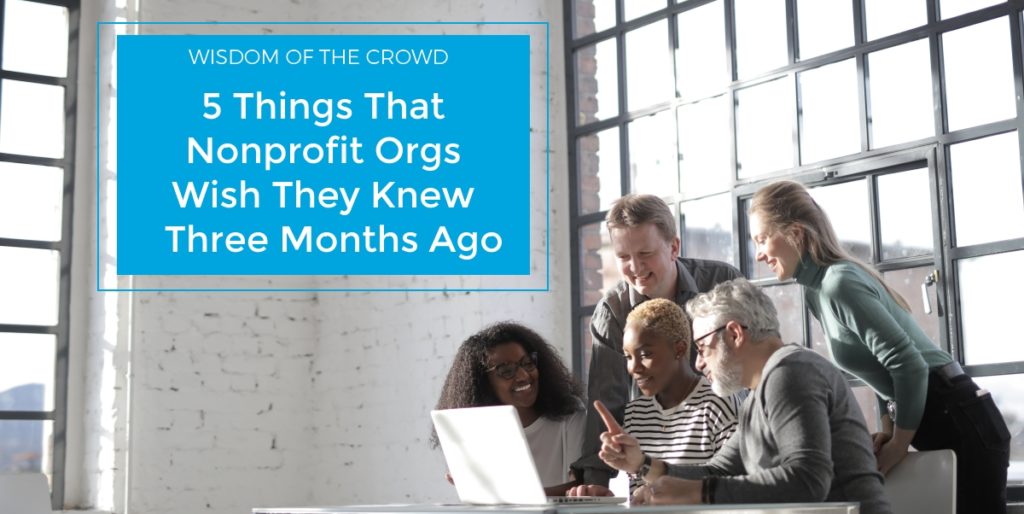As a fundraising professional, you’ve heard countless pieces of advice about why and how to connect with your supporters: say thank you, write handwritten notes and be sure to do it all as swiftly as possible.
Most of the time, these discussions are rooted in a desire for increased donations. And this is understandable—after all, you rely on donations to drive your mission forward and make the world a better place.
But supporter relationships should be more than just a means to an end. While it’s true that stronger connections lead to more successful fundraising, your donors will be able to sense your inauthenticity if you’re only pursuing a payday.
By cultivating relationships with intentionality and sincerity, you form a strong community that your nonprofit can depend on.
At Aly Sterling Philanthropy, we empower organizations to engage their communities, fundraise more effectively and plan for the future. Through our work as nonprofit consultants, we’ve compiled a list of recommendations to deepen your relationships with supporters:
- Put the donor first.
- Offer diverse opportunities for engagement.
- Maintain campaign-level energy throughout the year.
- Leverage supporter data.
- Craft a compelling story.
- Consider a nonprofit consultant.
As you develop your stewardship plan, remember that every organization and supporter base is unique. These tips are general enough to be appropriate for most nonprofits, but you should always take the time to tailor your strategies based on what you know about your donors. A nonprofit consultant can help you develop a stewardship plan that works for your unique audience. With that in mind, let’s dive in.
Put the donor first.
As any happily married couple can tell you, a successful relationship is a two-way street. This is true for your donor relationships as well.
To be fulfilled, both partners need to be able to give and take. Your supporter is already doing their part by dedicating their time or resources to your organization. Therefore, your nonprofit must also invest energy back into the relationship and put the donor first whenever possible.
This analogy stretches a bit then when you recognize that large nonprofits must cultivate relationships with thousands of individuals, but that doesn’t mean you’re off the hook.
Ensure a donor-centric approach is baked into the foundation of everything you do, from your communications efforts to your fundraising campaigns.
Most importantly, confirm that you have a solid donor recognition plan in place. Your plan may include a physical display like a donor recognition wall, digital elements such as social media shoutouts or traditional handwritten notes. However you choose to thank donors, make sure your plan differentiates between giving levels for a targeted approach.
Then, even in communications that aren’t specifically intended to thank donors, you should continue to frame your supporters as central to everything you do. When you create your annual report or write your monthly newsletter, share your accomplishments from a plural perspective to inspire a feeling of community. The difference between “Our organization did this” and “We made this happen together” is a small but meaningful shift.
Offer diverse opportunities for engagement.
Supporters will feel more connected to your cause if they can take action in ways besides simply making a donation.
To further engage your community, offer diverse opportunities for interaction and connection, such as the following:
- Volunteer opportunities. Give supporters a chance to contribute labor and energy to your mission. Depending on the nature of your organization, you may even be able to offer virtual activities for supporters to donate their time.
- Stewardship events. These events (like a virtual happy hour) give supporters the opportunity to bond and network with each other in addition to engaging with your team.
- Social media campaigns. While you should always encourage supporters to follow and interact with you on social media, a specific campaign heightens the opportunity for participation.
- Behind-the-scenes tour. Give supporters a glimpse of where the magic happens with a tour of your facility. You can do this via video conferencing or livestreaming if you aren’t able to host visitors in-person.
If you aren’t sure what activities your supporters would like to participate in, it never hurts to ask! Consider putting together a survey that asks supporters to share their desires and preferences for interacting with your organization. Based on their feedback, you’ll be able to implement new programming that you already know will be in-demand.
Maintain campaign-level energy throughout the year.
During your biggest fundraising campaigns, you treat every activity with care and consideration. Each interaction, communication and ask are part of a broader plan.
Extending this intentionality to your everyday operations will help you connect more deeply with your supporters.
At Aly Sterling, we call this attitude “campaign mentality,” and it essentially means you treat each day like you are in the midst of a capital campaign.
While this may sound exhausting, we believe wholeheartedly that this effort is worth it. Working with a campaign mentality will give your team extra urgency and purpose as you execute daily responsibilities.
Additionally, a campaign mentality encourages you to prioritize stewardship rather than placing it on the backburner. And when you approach each conversation with a supporter with this heightened sense of commitment, your energy will be contagious.
Leverage supporter data.

A better understanding of your current supporter base and any prospective donors will make your relationships more meaningful and sincere. To deepen your knowledge of supporters, you can analyze your existing donor database or conduct additional prospect research.
First, consider the information you already have on file. This data can help you evaluate your current engagement tactics—for instance, do supporters respond more favorably to direct mail or texting campaigns? What was the participation rate for last year’s year-end campaign? What do you know about supporters’ interests and motivations?
Instead of looking only at individual-level data or a broad overview, use this information to develop donor segments. Utilizing segmentation in your outreach efforts helps you create targeted and relevant communications that will resonate more strongly with each group.
In addition to making use of this existing data, you can also gather fundraising-specific information on current and potential supporters through prospect research. According to Double the Donation, prospect research helps your nonprofit determine a potential donor’s ability and desire to contribute to your cause.
Prospect research data generally falls into two categories:
- Philanthropic indicators. These data points represent a donor’s warmth towards and interest in your nonprofit. Key philanthropic indicators include previous donations to your nonprofit and others, history of board involvement, and background information like hobbies and interests.
- Wealth indicators. These markers reveal an individual’s financial capacity to give, including real estate ownership, stock holdings, past political contributions, and known business affiliations.
Both types of data are essential to forming a complete picture of each prospect.
With prospect research, you’ll be better prepared to initiate conversations and make fundraising asks without overstepping or damaging relationships. This helps establish a culture of trust and respect.
Craft a compelling story.
How do you tell the story of your nonprofit?
Hopefully, you have some powerful constituent testimonials or volunteer stories up your sleeve that spotlight your work. For your story to be persuasive, you must be able to convey why your mission is important as well as empower supporters to contribute to that mission.
When you tell the story of your nonprofit, make your donor the hero. This doesn’t mean a cape-wearing superhero, but rather the protagonist in your mission’s story. Your organization is simply the conduit by which your supporters are able to reach your community and make a difference. By representing your donor as the hero, you can more effectively call them to action.
In addition to your written story, you can include multimedia elements to further demonstrate your work. When possible, feature photos and videos of your supporters making a difference. Even though you won’t be able to highlight every one of your donors, their presence as part of your story will make it easier for other supporters to see themselves in your narrative too.
Consider a nonprofit consultant.
Since donor relationships are foundational to your success as an organization, it’s worth considering seeking the advice of an expert. An experienced nonprofit consultant can bring a fresh perspective and seasoned advice to improve your stewardship strategies.
While it’s possible to strengthen your supporter relationships without external support, a consultant can help to amplify and accelerate your existing efforts.
Specifically, a nonprofit consultant can assist your organization with:
- Crafting a donor recognition plan.
- Making recommendations to improve donor retention.
- Conducting prospect research to better understand existing and potential supporters.
Just be sure to select a nonprofit consultant with the right area of expertise. In the Aly Sterling Philanthropy guide to hiring a fundraising consultant, we explore who should be part of the decision-making process, how to find and assess a potential consultant, and the questions you should ask to confirm an appropriate fit. With the right consultant, you’ll be well-positioned to fortify your connections with donors.
Every moment that your nonprofit invests in supporter relationships will pay dividends as your organization grows. With a community that is dedicated to the success of your nonprofit, in good times and bad, you’ll be prepared to weather any storm. These recommendations should put you on the right path to strengthen those critical connections. Best of luck!
About the Author: Aly Sterling

Long before Aly Sterling founded her eponymous consulting firm, she was solving the unique yet similar problems encountered by nonprofit organizations.
Her decision to start her own business in 2007 was driven by her belief in leadership as the single most important factor in organizational success, and her determination to work with multiple causes at one time to scale societal change.
Aly’s expertise includes fundraising, strategic planning, search consultation and board leadership development for the well-positioned nonprofit. She is regularly sought for comment by trade and mainstream media, including the Chronicle of Philanthropy and U.S. News & World Report. She has contributed to publications of BoardSource and The Governance Institute, as well as the Toledo Chamber of Commerce and The Giving Institute.



 Communicate clearly
Communicate clearly 


